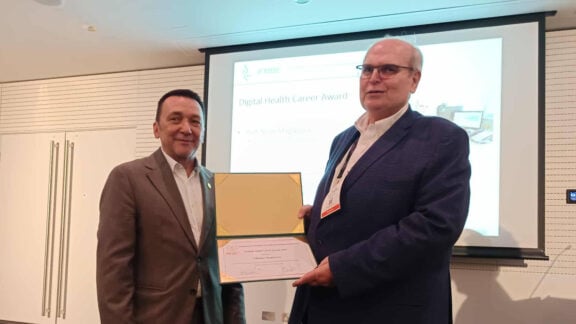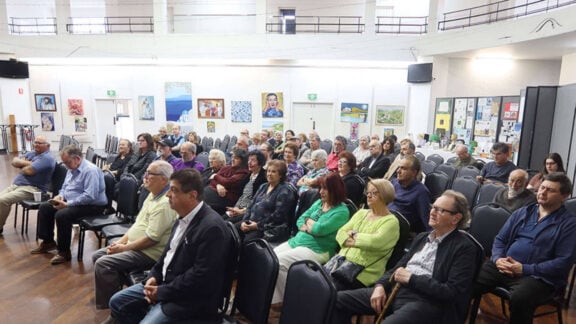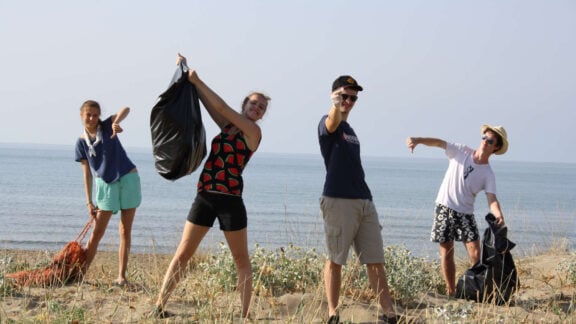Legacy is destiny
I enjoyed this movie a lot – more than I had expected to, and I can recommend it to readers, despite the usual number of cringeworthy moments – more on that below. In some respects, my experience of Dial of Destiny was bittersweet in that it marks the end of a series, which began when I took my first archaeology subject.
At the time, I was high on the excitement of my first archaeological excavation, which took place in California and an exciting find was a fragment of an abalone bead or a flint flake – the waste that results from the forming process of a stone tool. These items derived from hunter gatherer tribes of Chumash and Gabrielino native Americans, surely a time that had its carefree aspects. We know that hunter-gatherers could often find all they needed to subsist in a short period of time and could spend the rest of the day relaxing and socializing.
Like many Australians, they worked to live, rather than subject themselves to the Protestant ideology of workism, where one lives to work. And, yet, as my job involves a lot of creativity, my work is central to my identity. Although my interest was always in the old world, I decided to undertake my first excavation in California, because if I hated it, quitting and going home would be a lot easier than on an overseas excavation.
As I discuss in the recent article about the movie and real archaeological ethics, some student volunteers who go on an overseas excavation for their first field experience behave much like the Willie Scott character in Temple of Doom: reacting adversely to the strange food, strange people, and unsanitary conditions. This is a harsh truth about fieldwork: you either love it and have a big smile on your face the entire time, suffer through it stoically, or leave and undertake nice, clean art historical archaeology.
The Indiana Jones series ends at a time that mirrors our present, when the boomer generation is stereotyped as old and out of touch, responsible for all the world’s evils, or a disposable obstacle to be shoved aside as easily as possible so that younger generations can have their entitled place in the sun.
From booby trap to booby prize
Time forms the backbone of archaeological research, and it also serves as a leitmotif or recurring theme in Dial of Destiny. The movie is the story of an older academic searching for relevance in a world more than willing to discard him.
In one of the early scenes, Indy is thrown a surprise retirement party by his colleagues, who are probably more than happy to shove him out the door. His reward for decades of service, is a tacky clock. Instead of swooning students filling the lecture hall and swooning on his every word, the lecture attendance is spotty, and the students seem just as bored in Indy’s classroom as they do today.
No wonder his colleagues want to get rid of him! The theme of irrelevant old professor here is at least played for laughs, more so than in Netflix’s dark comedy, The Chair. Perhaps the students would be more engaged if they had seen an Indiana Jones movie, or possibly they might feel cheated when they realized that real archaeology is not Indiana Jones.
Boredom in Indy’s lectures are juxtaposed against a backdrop of parties and a parade celebrating the safe return of the Apollo 11 astronauts. There are a few moments to, remind the audience that what got the Apollo astronauts to the moon and back was the toil of uncelebrated engineers, scientists, and technicians. An irony given that we now celebrate internet entrepreneurs, who still seek that cache of space travel, now in the private sphere. The Astronaut’s discovery gives them fame, while archaeological discoveries elicit boredom from Indy’s students.
Thus, a major message of the new Indiana Jones movie is that older people do not stop wanting the same things they did when they were younger, and they do not want to be seen as disposable.

Dialling for destiny
I will now say a few things about the movie, however, be prepared for a few spoilers. Yes, Indiana Jones is still punching Nazis, and he is still afraid of snakes, although the movie takes a novel twist on this.
Less than novel, is the time worn formula the movie adheres to, which conforms to the popular formula in a lot of the pre-Daniel Craig James Bond Movies ( see the James Bond Movie Encyclopaedia by Steven Jay Rubin).
Like in many of the Bond movies, the action takes place on three continents, there is a love interest, a minor character or two that serves the trope of a “sacrificial lamb,” and there is a chase scene. However, the chase scene in Dial of Destiny is novel, and the only hint I will give you is that it is more like the chase in For Your Eyes Only than the ones in Goldfinger or more recently, No Time to Die.
What remains the same is that except for a couple of wooden drawing tools and a slide rule shown in one trailer, the movie is much like the others: Indiana Jones is more like a detective recovering others stolen goods or stealing goods back from the bad guys (Nazis). An even older professor, Basil Shaw assumes the place of the Willie Scott character, someone out of their element who does their best. Sallah returns, this time as a taxi driver. There is also another surprise from Indy’s past.
The female lead is Indy’s god daughter Helena, and like past archaeologists and art historians who have participated in the world of dark antiquities (studying looted art works), she has a criminal record. For example, the quest for the Dial involves attending an auction coming up for stolen antiquities in Tangiers, which seems to be her real Destiny.
Anyone with a smattering of knowledge of ancient Greece, will recognise from the trailer that the Dial of Destiny is the Anti-Kythera mechanism, a mysterious object of congealed bronze dials found at the bottom of the sea.
Scientific imaging studies have allowed for the mechanism to be interpreted and reconstructed as a model of the solar system, a type of early Orrery. While there may be controversy in this, there is no magic and no conspiracy theory – another theme of the Indy franchise and other popular franchises such as the X-Files.
Such a pedestrian account of the mechanism does not provide the type of intrigue and excitement we have come to expect from the Indiana Jones franchise, so a more magical significance needs to be assigned. One making it worthy of a Nazi conspiracy to control the past through controlling the present.
It is determined that there must be more pieces of the Dial, and now the chase is on to find them. And, Indy shows his relevance, through his connections: he knows a skipper in what looks to be the vicinity of the harbour at Laurion. The subtle message here is that connections based on experience still matter, so if you’re up and coming, whether in business or in academia, you don’t want to discard the old folks!
Helena “Wombat” Shaw believes in cash, and she seems more than happy to sell her knowledge to the highest bidder. She too easily decodes a wax tablet (decoding ancient texts typically takes years of painstaking labour in a stuffy archive) giving directions to Archimedes’ tomb in Syracuse, where it is determined that the final piece of the puzzle lies. But there’s a gold tablet underneath. After destroying the inscribed wax covering, Indy declares it belongs in a museum.
Archimedes’ tomb contains the other half of the mechanism, but the plan to achieve destiny by remaking the NAZI Reich confronts a few problems, which I will leave for viewers to discover. Let’s just suffice to say that the dial does not work quite as expected.
Our future is still our past
In short, Indiana Jones fans of which there are many, nonetheless, claim they will miss the franchise. For myself, I will not miss the colonialism or misogyny in the early movies or the dominant message that archaeologists are treasure hunters. I will also not miss the part of academic history where men get the jobs, while female students write ‘love you’ on their eyelids, which they bat at the younger Professor Jones. An irony of both archaeology and art history (see also the Julia Roberts move, Mona Lisa Smile), is that women have earned most PhDs for a long time, but most of the more prestigious university jobs, still go to men. And, yet the movie leaves us with a few homespun takeaway moments:
1. The past is important to the present
2. Older people still have value
3. Nazis are still bad
4. Archaeology is still dirty, fun, and exciting.
Louise A. Hitchcock is Professor of Aegean Bronze Age Archaeology at the University of Melbourne. She is also the only Australian and just one of two archaeologists to contribute an article to a new book on Indiana Jones in the Blackwell pop culture and philosophy series: “‘Sharing Your Adventures Has Been an Interesting Experience:’ Indiana Jones and Professional Archaeology,” in Dean A. Kowalski (ed.) Indiana Jones and Philosophy: Why Did It Have to be Socrates? Oxford: John Wiley & Sons, Inc. (2023): 178-187.









